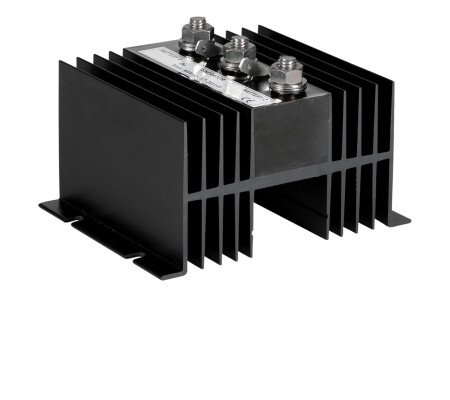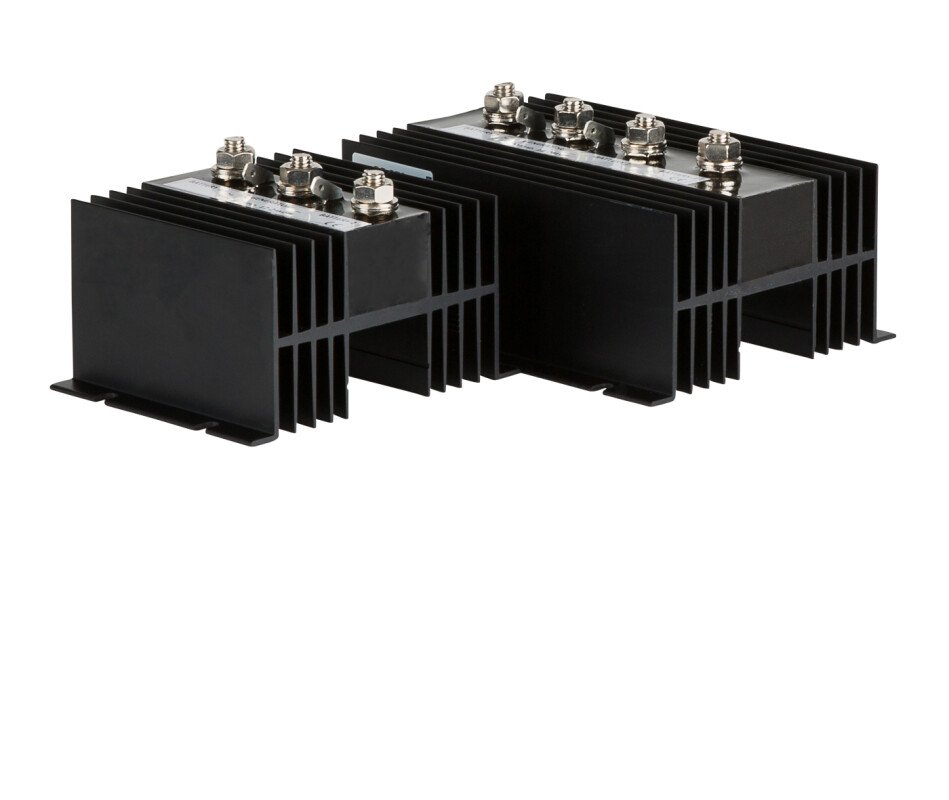DB-Series Battery-isolator
Separate charging
With the battery isolators from the DB series, the batteries can be charged simultaneously and completely separately. In this way, multiple batteries/groups can be charged from the alternator and/or battery charger. The charging current is split up and distributed according to the demand per battery (group). However, the batteries are not connected to each other and can therefore not discharge each other by consumers.
Low loss
These battery isolators are low loss. For example, with a full 100Ah battery with an input voltage of 13.8 Volts, the voltage drop is only 0.005 Volts. The DB 180 is suitable for 2 batteries/groups and the DB 270 for 3 batteries/groups. Both battery isolators are suitable for 12 and 24 volt systems. The maximum input voltage is 32 Volt. The batteries may differ in capacity. The maximum (charging) current may be 90 Amps. To achieve a higher current, two battery isolators of the same type can be connected in parallel. On this way, the maximum charging current is doubled to 180 Ampere.
Dealers
Christmas/New Year's Eve closing
In observance of the holidays, Xenteq will be closed from December 25, 2025, to January 2, 2026. We will be back at your service 'full of energy' on January 5, 2026!
Read more




